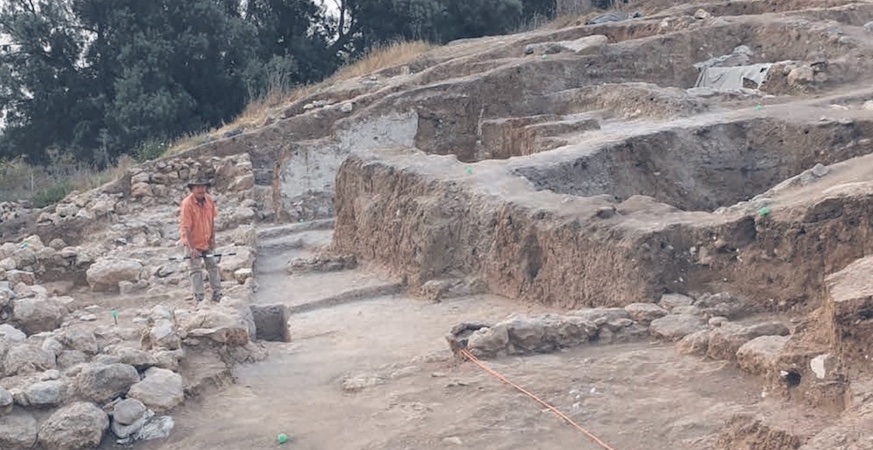Philistines and High-Tech
In English, if someone is referred to as a Philistine, it describes someone with bad table manners or the lazy person who sits in front of the TV drinking beer who has never picked up a book in his or her life. There is a misnomer that Philistines were rude and uneducated.
The Philistines first appear in Canaan about 3,200 years ago as part of a migration of Sea People coming from Crete. The Bible names five of their cities on or near the coast: Gaza, Ashkelon, Ashdod, Gath and Ekron. The Israelites, on the other hand, settled on the central mountain ridge that runs from north to south of the country. This explains the presence of fortresses Israelites built in the foothills protecting the likes of Jerusalem.
“The Philistines first appear in Canaan about 3,200 years ago as part of a migration of Sea People coming from Crete”
There have been several excavations in Israel to uncover the culture of the Philistines. Among them is Beit Shemesh where an ancient iron factory was discovered.
Archaeologists define ancient historical periods by the material used at that time, i.e. Stone Age, Bronze Age, etc. The Philistines dealt less in inferior bronze and focussed on developing the use of iron. Hence they ushered in what is known as the Iron Age. Iron was very advanced and new technology. Harder than bronze, it gave them the upper hand in warfare and life.
About halfway between Jerusalem and Ashkelon – between the coast and the mountains – sits Gath, a Philistine city and one of the largest biblical sites ever discovered in Israel.
The most famous person to come from Gath was Goliath. ‘Goliath’ is a derivative of ‘Gath.’ It was in Gath that an inscription was discovered. On it are two names that are reminiscent of the name Goliath. It is also dated from 950 BCE, which is when the giant Philistine fought the young and future King David.
“The most famous person to come from Gath was Goliath. ‘Goliath’ is a derivative of ‘Gath’”
Initial finds at the site were monumental remains of fortifications and what could be two huge gates. In addition, a man-made trench was discovered. This goes around the whole city and bears witness to the eventual defeat of Gath. Eight meters wide and more than five meters deep, it was set up by a besieging army to stop the Philistines escaping. The trench has been accurately dated to the Aramean siege mentioned in II Kings. The discovery not only corroborates the Biblical record, but it is also the earliest siege system ever discovered, not to mention that it was the eventual destruction of Gath that enabled the Israelites to expand.
There is also evidence of houses that collapsed when the city was set on fire. It was the fire, no less, that sealed and preserved some objects within the rubble. Archaeologists found pottery of all kinds of shapes and colours, which were vessels used for storage, cooking, serving, and cultic rituals.
Because cultures tend to rub off on each other, these discoveries of Philistine culture not only shed light on the Philistine life, but; also show us what everyday life was like during the biblical period in Canaan, the Land of Israel. We still have so much to discover, but it is safe to say that, at the moment, the idea that the Philistines were simple riffraff, is as far from the truth as can be. They were so smart they even have a whole period of time named after them, in honour of their artisan achievements. Without a doubt, they were the high-tech of their times.






